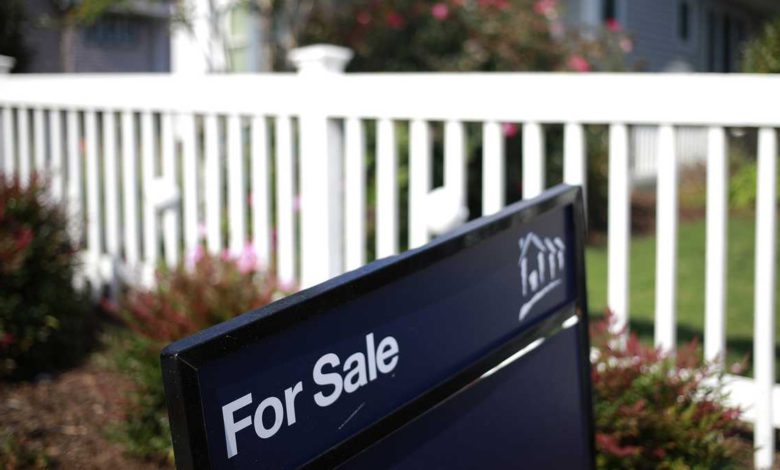
selling your home may never be easier with big companies grabbing up as many as they can. However, if you're in the market for one this year is going to be a tough one. According to the S. And P. Corelogic case shiller U. S. National Home Price Index. Home costs are up dramatically from 2020 to 2021. They estimate the average home price went up some 18.8% in that time. That's even more than the year before is 10.4% increase year to year and the single largest ever jump in home prices since they first began tracking them 34 years ago. But not all areas are experiencing the same inflation rates. The South and the Southeast US saw the biggest jumps both increasing in value by 25%. But phoenix Arizona maintained its 31 month lead over any other state, with home values increasing by 32.5% in 2021. Managing director at S. M. P. D. J. I told CNN he believes this shift has a lot to do with the pandemic over the last two years explaining that where people want to live has been reactionary to how people are living and working often at their homes. Still home prices and mortgage rates continue to rise with house payments increasing by $200 a month. Since only december 2020
Mortgage rates take a break, falling for the first time in weeks
After weeks of increases that pushed mortgage rates close to 4%, the climb took a break last week.The 30-year fixed-rate mortgage averaged 3.89% in the week ending Feb. 24, down slightly from 3.92% the week before, according to Freddie Mac.Even with this decline, mortgage rates have increased by more than a full percent over the past six months, said Sam Khater, Freddie Mac's chief economist."As we enter the spring homebuying season with higher mortgage rates and continued low inventory, we expect home price growth to remain firm before cooling off later this year," he said.This past week, factors including geopolitical uncertainty weakened rates on 10-year Treasuries, said Danielle Hale, Realtor.com's chief economist, pushing rates down."As the world reacts to developments in Ukraine, the uncertainty will likely mean a pause in the recent pace of increases," she said.Still, mortgage rates remain 84 basis points higher than just 9 weeks ago as expectations for economic growth, inflation and monetary policy have gone through a major reset, Hale said.There have only been two similar spikes in recent history, she said: One immediately following the 2016 election, when rates jumped 85 basis points in 10 weeks, and the other during the 2013 'taper tantrum,' when rates surged 116 basis points in 11 weeks."In both cases, home sales momentum slowed in the following year due to the impact on affordability, since rising rates mean higher homeownership costs even if home prices are unchanged," Hale said.This is especially true for those putting a smaller amount of money down on a home, Realtor.com found.A 3.9% interest rate on a 30-year, fixed-rate mortgage for a typical $375,000 home with a 10% down payment translates to monthly payments of $1,592. That is about $228 higher than in December 2020, Hale said. For a buyer putting down 20%, the monthly payment is $1,415 or $203 more.Higher costs of homeownership ultimately impact a buyer's ability and interest in home buying.Applications for mortgages dropped to their lowest level since December 2019 last week, according to the Mortgage Bankers Association."Higher mortgage rates have quickly shut off refinances, with activity down in six of the first seven weeks of 2022," said Joel Kan, MBA's associate vice president of economic and industry forecasting."Purchase applications, already constrained by elevated sales prices and tight inventory, have also been impacted by these higher rates and declined for the third straight week," he said.The monthly mortgage payment on the typical U.S. home rose 31% in the last year, according to an analysis by Zillow, as skyrocketing home prices and rapidly rising mortgage interest rates delivered a "one-two punch" to home buyers' budgets.In January 2021, a buyer purchasing the typical U.S. home, which was then worth $271,650, with a 20% down payment and a conforming, 30-year, fixed-rate mortgage, would have paid $885 a month, Zillow found. By this January, after the typical home rose to $325,667 and mortgage interest rates shot up, that same payment had risen 31% to $1,162 a month.According to Zillow, that average monthly mortgage payment is the highest on record. It is even higher than the record set in July 2006 of $1,118, when mortgage rates were a whopping 6.76%.Higher borrowing costs will likely push buyers to seek out lower-priced homes, according to the analysis by Jeff Tucker, senior economist at Zillow, meaning buyers may move to a more affordable area, try to wait out rates or delay a home purchase altogether.
After weeks of increases that pushed mortgage rates close to 4%, the climb took a break last week.
The 30-year fixed-rate mortgage averaged 3.89% in the week ending Feb. 24, down slightly from 3.92% the week before, according to Freddie Mac.
Even with this decline, mortgage rates have increased by more than a full percent over the past six months, said Sam Khater, Freddie Mac's chief economist.
"As we enter the spring homebuying season with higher mortgage rates and continued low inventory, we expect home price growth to remain firm before cooling off later this year," he said.
This past week, factors including geopolitical uncertainty weakened rates on 10-year Treasuries, said Danielle Hale, Realtor.com's chief economist, pushing rates down.
"As the world reacts to developments in Ukraine, the uncertainty will likely mean a pause in the recent pace of [interest rate] increases," she said.
Still, mortgage rates remain 84 basis points higher than just 9 weeks ago as expectations for economic growth, inflation and monetary policy have gone through a major reset, Hale said.
There have only been two similar spikes in recent history, she said: One immediately following the 2016 election, when rates jumped 85 basis points in 10 weeks, and the other during the 2013 'taper tantrum,' when rates surged 116 basis points in 11 weeks.
"In both cases, home sales momentum slowed in the following year due to the impact on affordability, since rising rates mean higher homeownership costs even if home prices are unchanged," Hale said.
This is especially true for those putting a smaller amount of money down on a home, Realtor.com found.
A 3.9% interest rate on a 30-year, fixed-rate mortgage for a typical $375,000 home with a 10% down payment translates to monthly payments of $1,592. That is about $228 higher than in December 2020, Hale said. For a buyer putting down 20%, the monthly payment is $1,415 or $203 more.
Higher costs of homeownership ultimately impact a buyer's ability and interest in home buying.
Applications for mortgages dropped to their lowest level since December 2019 last week, according to the Mortgage Bankers Association.
"Higher mortgage rates have quickly shut off refinances, with activity down in six of the first seven weeks of 2022," said Joel Kan, MBA's associate vice president of economic and industry forecasting.
"Purchase applications, already constrained by elevated sales prices and tight inventory, have also been impacted by these higher rates and declined for the third straight week," he said.
The monthly mortgage payment on the typical U.S. home rose 31% in the last year, according to an analysis by Zillow, as skyrocketing home prices and rapidly rising mortgage interest rates delivered a "one-two punch" to home buyers' budgets.
In January 2021, a buyer purchasing the typical U.S. home, which was then worth $271,650, with a 20% down payment and a conforming, 30-year, fixed-rate mortgage, would have paid $885 a month, Zillow found. By this January, after the typical home rose to $325,667 and mortgage interest rates shot up, that same payment had risen 31% to $1,162 a month.
According to Zillow, that average monthly mortgage payment is the highest on record. It is even higher than the record set in July 2006 of $1,118, when mortgage rates were a whopping 6.76%.
Higher borrowing costs will likely push buyers to seek out lower-priced homes, according to the analysis by Jeff Tucker, senior economist at Zillow, meaning buyers may move to a more affordable area, try to wait out rates or delay a home purchase altogether.
Source link








